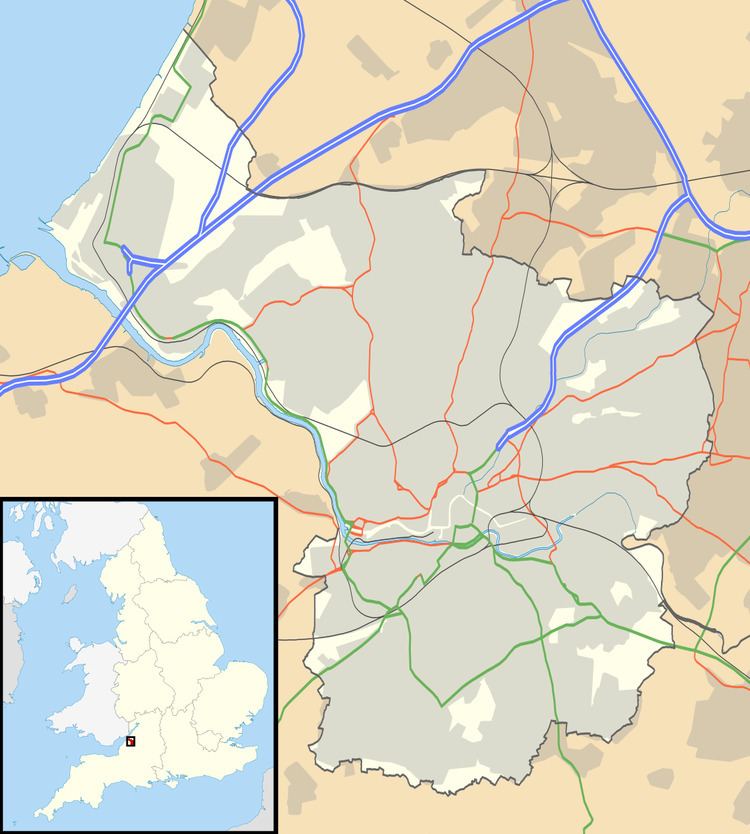OS grid ST625820 | Area 60 ha | |
 | ||
Address 249 Juniper Way, Bradley Stoke, Bristol BS32 0DP, UK | ||
The Three Brooks Nature Reserve is a Local Nature Reserve of about 60 hectares (150 acres) in Bradley Stoke, South Gloucestershire, England. It is named after the Hortham, Patchway, and Stoke Brooks which run through it, meeting at Three Brooks Lake before flowing eastwards back under the M4 motorway as Bradley Brook.
Contents
The town of Bradley Stoke was built in the 1980s on low-grade farmland, and a number of natural features such as Savage's Wood, Webb's Wood, and Sherbourne's Brake were incorporated into the town to form the Three Brooks Local Nature Reserve. This tranquil area in the middle of the busy community of Bradley Stoke is made up of the three previously named bluebell woods, linked by an important wildlife corridor that includes brooks, ponds, areas of rough grassland, species-rich hedgerows, and a lake.
The site is owned by the South Gloucestershire Council.
HistoryEdit
The woods on the nature reserve were used predominantly as sources of timber, although the original Sherbourne's Brake copse may have been used as a covert. Webb's Wood particularly supplied coppiced timber and Savage's hornbeam and oak. Savage's Wood was preserved during the 1940s and '50s as a nature reserve by the owner of Little Stoke Farm, Howard Davis, who, as the largest local farmer, owned the land up to and including the wood. Davis was also one of the founders of the Wildfowl Trust at Slimbridge.
In the same area, Bradley Stoke Way cut a swathe through Savage's Wood when built, leaving a small remnant of the wood on the far side of the road next to Tesco's car park. Much of the ash plantations nearby were planted in reparation for this disruption of the wood.
HabitatsEdit
The Three Brooks Local Nature Reserve comprises three bluebell woodlands; Webb's Wood, Savages's Wood, and Sherbourne's Brake. New trees have been planted with funds from the Woodland Grant Scheme to help develop the Forest of Avon in South Gloucestershire.
The rich mix of habitats provides a valuable home to a wide range of wildlife, including reed buntings, skylarks, great crested newts, and slow worms.
The Three Brooks Lake attracts ducks throughout the year and has provided breeding sites for little grebes, reed warblers, sedge warblers, and mute swans.
The feature known as the tump is new, made up mainly of spill from the Second Severn Crossing. It provides a habitat for skylarks and other birds which are thought to have bred there.
The community orchard was planted with various fruit trees, bushes, and wild flowers to provide pollen and nectar for insects within the reserve as well as to provide natural resources for the local community, such as fruit.
ConservationEdit
The nature reserve is cared for by local residents who have set up a conservation group, the Three Brooks Nature Conservation Group, that is open to the public and meets on the first Saturday of each month to help manage the reserve. The group organises a range of events and practical workdays to help raise awareness of the nature reserve and to enhance its biodiversity. These range from bat walks to traditional woodland management like coppicing and ditch-clearing. The BTCV's (British Trust for Conservation Volunteers) have a 'green gym' at the nature reserve.
WildlifeEdit
The rich mix of habitats provides food and shelter to a wide range of wildlife, including reed buntings, skylarks, great crested newts, and slow worms.
AccessEdit
There are several main access points into the reserve, all with well-surfaced paths. The sign-posted network of cycle paths goes throughout the reserve for people to view the many different habitats.
